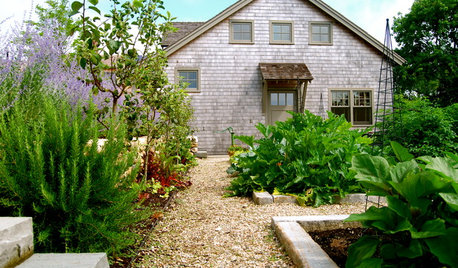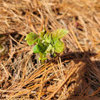Is anyone having success growing melons?
Creek-side
11 years ago
Related Stories

ARCHITECTUREHave It Your Way — What Makes Architecture Successful
Universal appeal doesn't exist in design. The real beauty of any home lies in individualization and imagination
Full Story
LANDSCAPE DESIGNSecrets of a Successful Water Garden
Relax. Having a water garden is much easier once you understand the basics
Full Story
KITCHEN DESIGNThe Cure for Houzz Envy: Kitchen Touches Anyone Can Do
Take your kitchen up a notch even if it will never reach top-of-the-line, with these cheap and easy decorating ideas
Full Story
GARDENING GUIDESThe Simple Secret to Gardening Success
Learn the kinds of soil and a DIY type test to make sure you’re putting the right plant in the right place
Full Story
FURNITURE10 Secrets of Successful Secondhand Furniture Shopping
Design professionals offer tips on how, where and what to buy
Full Story
SALVAGEDIY: Secrets of Successful Upcycling
Learn how to find and customize salvaged pieces and materials to create one-of-a-kind furniture and accessories you love
Full Story
MOST POPULARSummer Crops: How to Grow Sunflowers
Savor snack-tastic sunflower seeds once the radiant blooms have faded — if the birds have saved you any, that is
Full Story
EDIBLE GARDENSSummer Crops: How to Grow Tomatoes
Plant tomato seedlings in spring for one of the best tastes of summer, fresh from your backyard
Full Story
ORGANIZINGSmall Steps to Organizing Success
Take care of bite-size projects, and your home's big picture will be an organized dream before you know it
Full Story
EDIBLE GARDENSHow to Grow Your Own Sweet Summer Crops
This guide will help any gardener get started on growing the freshest warm-season veggies and berries for summer
Full StoryMore Discussions








farmerdill
sunnibel7 Md 7
Related Professionals
Allen Landscape Architects & Landscape Designers · Oatfield Landscape Architects & Landscape Designers · Burien Landscape Contractors · Cicero Landscape Contractors · Euclid Landscape Contractors · National City Landscape Contractors · Seminole Landscape Contractors · West Orange Landscape Contractors · New Carrollton Landscape Contractors · Hockessin Driveway Installation & Maintenance · Leesburg Driveway Installation & Maintenance · Pontiac Driveway Installation & Maintenance · Raynham Driveway Installation & Maintenance · Lakewood Driveway Installation & Maintenance · Parker Driveway Installation & Maintenancewayne_5 zone 6a Central Indiana
foolishpleasure
rayrose
little_minnie
greenmulberry
runswithscissors
pawneepapa
foolishpleasure
wayne_5 zone 6a Central Indiana
sunnibel7 Md 7
bb
ltilton
little_minnie
wayne_5 zone 6a Central Indiana
foolishpleasure
ltilton
wayne_5 zone 6a Central Indiana
Creek-sideOriginal Author
lolauren
Creek-sideOriginal Author
thegreatcob
ltilton
wayne_5 zone 6a Central Indiana
rayrose
vgkg Z-7 Va
wayne_5 zone 6a Central Indiana
ltilton
Creek-sideOriginal Author
rayrose
vgkg Z-7 Va